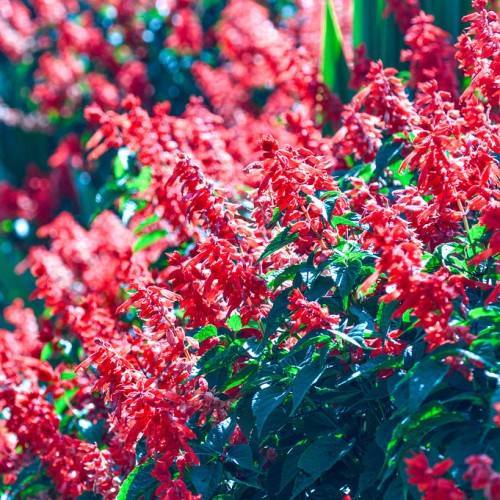
scarlet sage
Salvia splendens
Cycle:
Herbaceous Perennial
Watering:
Average
Hardiness Zone:
10 - 11
Flowers:
Flowers
Sun:
Full sun,part shade
Soil:
Well-drained
Fruits:
Fruits Ready In Summer
Leaf:
Yes
Growth Rate:
High
Maintenance:
Low
Drought Tolerant:
Yes
watering
Scarlet sage needs to be consistently watered once the soil feels dry to the touch. During the summer months, the plant should be watered 2 to 3 times per week and in the winter, it should be watered once a week. When watering, it is important to make sure to provide enough water that the soil is soaked through to a depth of at least a few inches. Be careful not to over-water the plant, as this can cause root rot and other issues. During the hottest days of summer, it may be necessary to provide extra water.
sunlight
Scarlet sage is an annual plant that requires 6 to 8 hours of direct sunlight each day in order to thrive. For optimal growth, the sunlight should be brightest in the morning, and it should be partial shade or indirect light in the afternoon. Generally, those living in North America should aim to give the plant at least 4 hours of direct morning sun, including 2 hours at the peak of the day. It should be placed in a southern-facing window, patio or deck, or any other sunny location. As the summer months arrive, it is important to give the plant some shade during the hottest part of the day, as direct sunlight during those times can lead to scorching and wilting.
pruning
Scarlet sage should be pruned back regularly throughout the growing season to keep the plant in good shape and encourage new growth. For best results, prune the plant back in early summer, just as the blooms have begun to fade. Prune the plant back by at least 1-third of its height, removing any dead or damaged growth. Take care to avoid pruning the unopened buds. This will help promote new and colourful blooms in the following season. Prune the plant regularly throughout the summer and into early autumn, until mid or late autumn, when it’s time to prepare the plants for winter dormancy.
